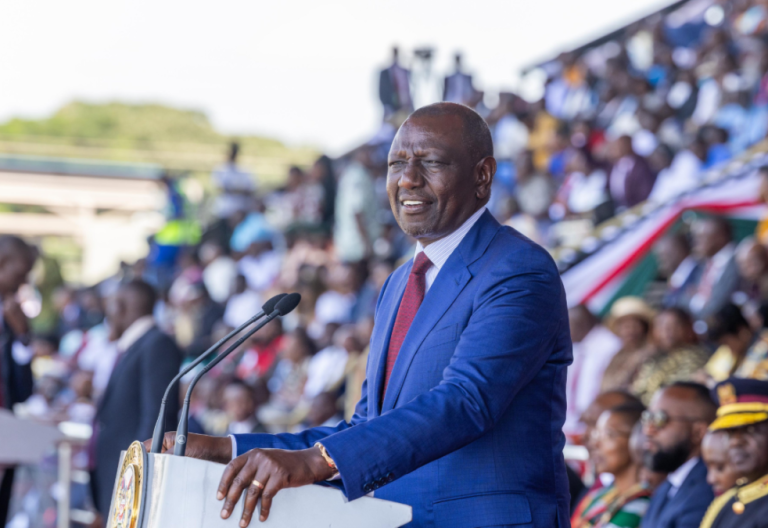How Ruto’s sheriffs failed to sparkle

In the wake of the historic June 2024 Gen Z protests—the most widespread civil unrest Kenya has seen since independence—that was soon followed by the dissolution of the Cabinet and much later the impeachment of the then Deputy President Rigathi Gachagua, President William Ruto made a bold political gamble.
Facing a nation teetering on the edge of anarchy, the Head of State executed a Cabinet reshuffle, appointing four prominent figures from the Mt Kenya region to strategic positions in a calculated move to quell the growing dissent.
The appointments were William Kabogo (Cabinet Secretary, Ministry of Information, Communications and the Digital Economy), Mutahi Kagwe (Cabinet Secretary, Ministry of Agriculture and Livestock Development), Lee Kinyanjui (Cabinet Secretary, Ministry of Investments, Trade and Industry) and Ndiritu Muriithi (Kenya Revenue Authority Chairman).
All of them were seasoned political heavyweights— the appointments were meant to pacify a restless base that had grown increasingly disillusioned with the Kenya Kwanza administration following the impeachment of Gachagua.
The four were expected to bridge the widening trust gap between the government and a region that had overwhelmingly backed Ruto in 2022 but now felt sidelined and economically neglected.
Fighting own battles
Yet, one year on, political analysts and the public argue that Ruto’s strategy has failed.
Rather than dousing the political fire, dissatisfaction in the President’s former stronghold has intensified with the four Kinyanjui, Kagwe, Kabogo and Muriithi miserably failing to change the tide.
“Unlike their the ODM brigade from Nyanza, co-opted into the government who have been useful to the President both administratively and politically, the four have not added any value to Dr Ruto,” says political analyst Javas Bigambo.
Bigambo says Mt Kenya has remained politically slippery, forcing politicians from the bloc to prioritise self-political preservation while relegating President Ruto’s re-election agenda.
Bigambo cites Kabogo, whom he says is concentrating his efforts on re-asserting his relevance in Kiambu county, while Kinyanyui is busy strategising on how to recapture the Nakuru gubernatorial seat he lost in 2022.
On Kagwe, Bigambo says the Agriculture Cabinet Secretary is yet to shed off his loyalty and ties with former President Uhuru Kenyatta.
“Their political value has been diminishing each day immediately they were appointed and have never been relevant to the appointing authority,” Bigambo says.
Dipping their fingers in politics
Save for Kabogo who after being appointed attempted to traverse some areas in Mt Kenya before making a tactical retreat after being rejected, the others have avoided dipping their fingers in politics.
While his two counterparts Kagwe and Kinyanjui maintained a low-key presence, Kabogo hit the political ground running promising to reverse the displeasure in Central against President Ruto.
Kabogo went a notch higher to declare himself as the New Sheriff in Town – to mean he was President Ruto’s voice of influence in Central.
“I am causing a lot of heat right now in the mountains. It is true I am the sheriff in town,” he declared.
Initially, the position seems to have been held by the belligerent Kimani Ichung’wah, the National Assembly Majority Leader, who did less to win back the livid Mt Kenya residents who are yet to recover from the onslaught on Gachagua.
“When there is a gap, people occupy it but when they see that the gap will shift, there are a lot of worries. I will continue speaking to the mountain,” added Kabogo.
Save for the pronouncements, Kabogo has since gone silent in Mt Kenya and appears to concentrate on his ministerial job.
Fury over soaring living costs, punitive taxation, corruption, and the opulence of top government officials has reignited resentment among voters who once championed President Ruto’s candidacy.
“We woke up early to vote for Ruto, defying our then-leader Uhuru Kenyatta. But instead of delivering services and stabilising the economy, this government has overtaxed us. Corruption has worsened, and the cost of living is unbearable,” lamented John Mumu, a resident of Thika, Kiambu County.
The youth, in particular, say their resistance was organic, leaderless, and national in scope—undermining traditional political power structures.
“This is not what we were fighting for,” said Ann Mumbi, another Kiambu resident.
Political survival
“We were already well represented in the government. Our protest wasn’t about Cabinet slots—it was about extrajudicial killings, economic hardship, and joblessness. That anxiety has only grown.”
Analysts agree that the appointments were cosmetic, a political solution offered to an economic crisis.
“This was always bound to fail,” said political analyst Maina Kamunya.
“You cannot fix a broken economy with political appointments. The youth want food on the table, jobs, and a future—not tokenism in the Cabinet.
One year later, the issues that drove Gen Z to the streets remain unresolved. The president gambled on appeasement and ignored the deeper economic anxiety. That miscalculation has cost him dearly,” said Kamunya.
Kamunya added that Ruto’s approval ratings have plummeted to “unimaginable levels,” with discontent now spreading beyond traditional opposition zones.
Political commentator Ngure Kang’ara said the impeachment of Gachagua only widened the rift.
In what appeared to be a compensatory move, Ruto elevated other Mount Kenya leaders to high-profile positions. But the strategy fell flat.
“Appointing Kabogo, Kagwe, and Kinyanjui was a clear message to Mt Kenya—’ I’m still with you.’ But the ground didn’t move,” Kang’ara explained.
“The appointments failed to address the economic hardships or the deep sense of betrayal.”
Kang’ara noted that Ruto now seems to be quietly shifting his political focus towards Nyanza, Western, and Coast, possibly preparing for a 2027 scenario where the Mt Kenya vote is irretrievable.
According to veteran political analyst Ndung’u Gachane, the appointed leaders have gone largely silent, choosing political survival over confrontation.
“They were expected to be the face of renewed trust between Mt Kenya and the government.
Instead, they’ve withdrawn from the public sphere. It’s become clear they lack the influence to either shift regional sentiment or redirect government policy,” said Gachane.
Gachane added that without a coherent economic recovery plan or regional development strategy, the appointments now appear to have been little more than a PR stunt.
“They joined the Cabinet hoping to heal old wounds, but only added salt to them. This wasn’t governance—it was political theatrics.”
He urged the President to focus on tangible governance over political tokenism:
“An economic problem must be solved economically. Until that happens, no amount of Cabinet reshuffling or political appeasement will restore the President’s credibility—especially in his former stronghold, Mt Kenya,” said Gachane.














